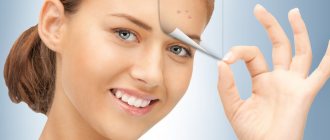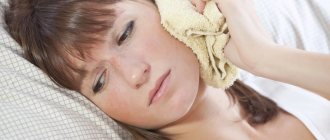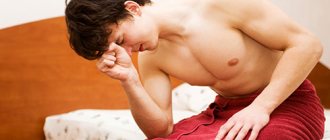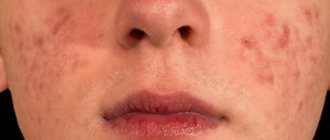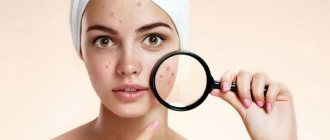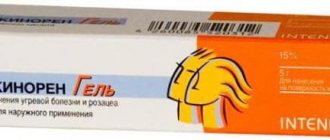Probably each of us has heard at least once in our lives that you can’t squeeze out pimples yourself. Such manipulation will contribute to an even stronger spread of infection. And some doctors or parents even frightened us with the possibility of blood poisoning and death.
Teenagers do not respond to such warnings, considering them unfounded. In fact, there really is an area on the face that doctors call the “triangle of death.” Not only is it dangerous to squeeze pimples in this area, but even touching it with dirty hands is not recommended. The consequences could be dire.
Triangle of Death
Most people pop a pimple on their face from time to time and survive. But this does not mean that the existence of the “triangle of death” is fictitious. We can say that by squeezing out purulent inflammation in this area, a person is playing Russian roulette. The outcome depends on many factors:
- type of pimple (boils, acne);
- squeezing was carried out with or without the use of disinfectants;
- whether the pus was completely removed, or some of it entered the bloodstream;
- whether there was a larger blood vessel located next to the inflammation;
- How strong is a person’s immunity?
More often than not, people are really lucky and their immunity saves them. However, this is not a reason for a frivolous attitude towards your own life and health. History knows enough cases when a small subcutaneous purulent inflammation became the cause of death of famous people.
Grand Duchess Catherine Pavlovna, granddaughter of Empress Catherine the Great, became a victim of the fatal triangle on her face. Ekaterina Pavlovna was a beauty. Such men as Prince Dolgoruky, General Bagration, Prince Kurakin, poet Vasily Zhukovsky and many others were in love with her. But the beauty chose to connect her life with the Prince of Württemberg, thanks to this marriage becoming the Queen of Württemberg.
One day the queen noticed a small abscess in the right corner of her mouth. The royal lady could not afford to appear in this form in front of the courtiers and removed the pimple herself. Her doctors subsequently insisted on this. She assumed that in the morning there would be no trace of him left. Unfortunately, the next day the situation began to worsen. A small lump appeared and grew rapidly. A few days later the swelling became enormous and the temperature rose. Ekaterina Pavlovna did not live even a week after removing the unfortunate pimple.
A similar fate befell the great composer Alexander Scriabin. The composer developed a boil in his nasolabial triangle. Alexander Nikolaevich did not want to perform at the concert in this form. He preferred to get rid of the pimple on his own . Unfortunately, this led to the development of sepsis, from which Scriabin died.
Features of the structure of the nasolabial zone
Unlike the Bermuda Triangle, there is nothing mystical about the triangle of death on the face. Everything is explained by the peculiarities of the anatomical structure of this zone. This area refers to the area above the upper lip, which is limited on the sides by the nasolabial folds and ends at the root of the nose.
This place contains a huge number of blood vessels. These are both arterial and venous vessels. The veins here have a certain peculiarity - they do not have valves. This means that the infection that has entered the blood will not be delayed. It will immediately rise with the blood flow into the cavernous sinuses of the brain. This can easily provoke the development of thrombosis or purulent meningitis.
Most of the venous blood that drains from the brain passes through the superficial veins of the face. This means that the infection can spread throughout the body. That is, by avoiding meningitis, you can get general blood poisoning.
Squeeze a pimple and die
To understand why you should not squeeze out pimples on your face, you need to know what happens during this manipulation. Trying to squeeze out pus, a person mechanically squeezes the pimple. This damages the very small and fragile blood vessels that are in the affected area. This opens the way for infection, which passes through small vessels further into larger ones.
In most cases, the person removes the top of the abscess. And everything that is inside at its base goes deeper as a result of compression . Some of the pus enters the damaged vessels. That is, pus from the boil itself and microbes from the environment enter the bloodstream, since the wound is open.
The facial vein is one of the most important superficial veins, which drains into the jugular vein. In the case of suppuration on the nose or above the lip, the facial vein is almost always involved in the process. It carries the infection to the jugular and further throughout the body.
If the ducts of the facial vein are thrombosed, retrograde (reverse) blood flow occurs. Due to this, meningitis, sinus inflammation and many other pathologies develop. Unfortunately, they cannot be diagnosed immediately. And the chances of saving a person fade with every missed minute. Therefore, for any, even minor, inflammatory processes in this dangerous zone, you must consult a doctor.
Nose hair removal
There are many small hairs in the nasal cavity . They perform very important and necessary functions for the body:
- trap dust and dirt;
- prevent viruses and bacteria from entering the body;
- retain toxins;
- allow you to warm the inhaled cold air.
As a result of research, scientists have found that people with thick nasal hair suffer from asthma three times less often than those who have little hair. We can say that nasal hairs are on the body's first line of defense against infections.
Unfortunately, many people have hair that grows too long and sticks out of their nostrils. Some people use scissors to remove it, others use wax. It is important to understand that this is very dangerous. Careless movement with scissors can cause severe damage. And the use of wax not only leaves microscopic wounds at the site of the pulled out hairs, but also injures the mucous membrane .
Since the nose occupies most of the triangle of death, all the dangers described above concern it no less. The wounds can get infected and toxins that are retained by the hairs in the nose, and the consequences will be catastrophic.
As a result of pulling out hairs with wax, their incorrect growth is possible in the future. At best, they will begin to grow down and become even more noticeable. And in the worst case, hair may grow into the skin. And this is already fraught with the development of boils in the nose.
All this does not mean that you need to give a damn about your own appearance and walk around with hair sticking out of your nose. There is a completely safe way to remove them. To do this, just purchase a special trimmer for removing hair in the nose and ears.
Psychology - why do you like to push and how to unlearn the habit?
From a psychological point of view, the constant desire to squeeze out pimples is a subconscious desire to get rid of current life problems. Quite often, people who have a pathological tendency to squeeze out acne are diagnosed with a number of internal complexes, which they strive to overcome by performing certain psychological rituals. These include the habit of constantly squeezing pimples. Elimination of pathological tendencies is possible only after resolving internal conflicts, getting rid of psychological complexes, which will give the patient self-confidence. Specialists such as a psychologist and psychotherapist can help with this.
Squeezing out blackheads in other areas
You can squeeze out pimples on other parts of your face , such as your forehead or cheeks, but only in a dermatologist's office. The doctor himself will perform professional facial cleansing:
- mechanical;
- ultrasonic;
- chemical.
The doctor, based on the skin type and other characteristics of the body, will select the most effective method and carry out the manipulation in compliance with all sanitary standards. Only a professional can properly remove the pus so that it comes out completely and does not leak into the underlying tissues and bloodstream.
More and more Western dermatologists are abandoning the procedure of mechanical facial cleansing. It is believed that it is not only traumatic, but also ineffective. In addition, any manipulation that was performed incorrectly can lead to complications.
Possible complications
Before you start squeezing out pimples on your own, you should familiarize yourself with the list of complications that this is fraught with.
Independent actions to neutralize acne can lead to the following complications:
- Hyperpigmentation. Due to damage to small capillaries and larger vessels, bluish spots appear.
- Scars. Squeezing out purulent contents ruptures the subcutaneous epidermal layers. The wound heals and a scar forms.
- Infection. Under pressure, pus can seep into nearby pores. By squeezing one pimple, you can get an entire colony-settlement instead.
- Sepsis. After opening the pustules, the wound remains open. It can contain pathogenic bacteria. With the flow of blood and lymph, they begin their journey through the body, which can end in sepsis.
- Blood clot detachment. Microscopic particles of damaged tissue can get inside the capillary. There the clot will increase. In the event of an unfavorable combination of circumstances, such a blood clot can enter larger vessels and travel through the bloodstream to the brain or heart. So it turns out that squeezing a pimple can result in a heart attack or stroke.
If you can't, but really want to
There are few people so pedantic and careful who would go to the doctor to remove one pimple. Especially if the abscess was discovered on the eve of a birthday, wedding or other important event and you simply cannot get to the doctor.
In such an exceptional case, is it possible to squeeze them out? Acne is the only type of pimple that you can remove on your own. But subject to all precautions:
- Before starting the procedure, wash your hands thoroughly with soap;
- Then wash your face and steam the skin with a decoction of any medicinal herbs (St. John's wort, celandine, oak bark, string). If there are no herbs, you can simply sit, covering your head with a towel, over a bowl of boiling water.
- Wipe the area with the pimple with chlorhexidine;
- Wrap your index fingers in several layers of sterile bandage. You can use cotton pads;
- Using your index fingers, try to press on the root of the eel. This should be done carefully, without pressing the pimple inside;
- Squeeze out the pus until a drop of blood appears;
- Treat the wound with hydrogen peroxide;
- Apply a small piece of cotton wool moistened with salicylic acid to the wound for two to three minutes;
- Do not use decorative cosmetics for 48 hours after acne removal;
- A crust should form in place of the former pimple. You can’t rip it off; in a few days it will fall off on its own.
Traditional recipes for removing acne
You should squeeze out blackheads yourself only as a last resort. If the cause of their appearance is not identified and eliminated, they will appear again. Therefore, squeezing is not the most effective way to fight.
At home, you can use masks and scrubs. Scrubs are used only if there are no inflamed elements on the skin. A mixture of any anti-blackhead cleansing gel and fine salt and soda can effectively cleanse pores. Mix all ingredients by eye and treat problem areas twice a week.
A mask with egg white also effectively cleanses pores. Beat the egg whites with a mixer until foamy, then add a few drops of lemon juice. Apply to entire face for 15 minutes. A white clay mask with hydrogen peroxide gives good results. All you need to prepare it is mix the clay powder with peroxide until it reaches the consistency of sour cream. Apply to face and leave until completely dry. Then rinse with water and apply a pore-tightening cream.
The listed methods are completely unsuitable if there are red, purulent pimples on the face, especially boils. In order to safely get rid of such a pimple, it is better to purchase Vishnevsky or ichthyol ointment at the pharmacy. Apply the ointment directly to the inflammation, cover with a cotton pad and secure with a band-aid.
This compress can be left on all night. If you don’t need to go anywhere during the day, apply a compress for the day. Gradually the pus will come out completely without causing any harm.
Reasons for appearance
The most common cause of acne on the face is hormonal changes that occur in the body of every teenager. Sometimes hormonal disorders also occur in adults. But diseases are already to blame here.
Other common causes include:
- Self-treatment of acne.
- Squeezing pimples and touching your face with unwashed hands.
- Poor nutrition - fatty and sweet foods in the diet.
- Incorrectly selected cosmetics, expired.
- Demodectic mange, which is caused by mites.
- Overwork.
- Diseases of the stomach or intestines in a chronic course and in the acute stage.
These causes of acne in the nasolabial area apply to all people. And they need to be considered in more detail.
In children
Acne in a small child in the area of the nasolabial triangle also appears for several reasons. Moreover, all the symptoms are so similar that it can be very difficult to make a correct diagnosis.
Miliaria is a rash in the form of small blisters that contain liquid inside. There is also redness of the skin. The blisters can become infected, causing an infection. The disease develops due to lack of care for the baby and is more typical for newborns.
Hormonal acne appears on the face in the first month of life. They do not require any treatment and go away on their own. The reason is the mother’s hormones, which are also present in the child’s body, but now the newborn’s body begins to get rid of them.
White pimpleslocated near the nose and lips and collected in small groups, appear due to the immaturity of the epidermis and disruption of the skin pores. They can remain on the face for up to 6 months without interfering with anything.
An allergic rash appears in the form of red spots, with a small rash already forming on them. The main symptom is severe itching and swelling of the skin.
If these symptoms are present, the baby should be shown to a pediatrician, as there is a high risk of developing pyogenic skin diseases.
In men
The reasons for the appearance of acne in the nasolabial triangle in men are not very different from those given above. However, there are individual characteristics here too.
Improper shaving or lack of skin care after this procedure . Shaving your face is a real test for the epidermis. At this moment, microcracks, scratches and wounds appear here, into which germs and bacteria easily penetrate, causing purulent inflammation.
Demodex mite . This is a dangerous dermatological disease. Ticks that live under human skin come out from time to time, leaving behind potholes and cracks.
Folliculitis. This is an inflammatory disease of the hair follicles, and the symptoms of the disease resemble minor acne. The main reason is too much shaving and lack of skin care.
Poor nutrition . Many foods negatively affect the condition of the epidermis. These primarily include all fast foods, which have no benefit, but contain large amounts of fat and carbohydrates. This also includes sweet carbonated drinks and, of course, sweets from the store that have an unclear composition.
Hygiene violations . You should wash your face twice a day, and even men are recommended to use a special gel or foam. This is the only way to clear clogged pores, which means the risk of acne will be minimal.
Prolonged exposure to the sun . For this simple reason, sweat production increases, which means dirt particles constantly stick to the skin. They clog pores and make it easier for bacteria to start living and multiplying in them.
What is acne
Inflammation of the sebaceous ducts and hair follicles is called acne or acne. Inside the skin there are many hair follicles or bulbs from which hair grows through the pores.
The bulbs are nourished by the sebum-producing sebum glands; sebum nourishes the hair, protects it and the skin from the effects of aggressive environmental factors.
Due to hyperfunction of the sebaceous glands or blockage of the lumen of the hair follicles, obstruction of the skin pores appears. Plugs form that prevent sebum from coming to the surface. As a result, a closed, warm space with an abundance of nutrients appears - an ideal environment for the development of bacteria.
Inflammation appears, which, depending on the form of its occurrence, has its own qualifications:
- The common pimple is scientifically called acne vulgaris. These are either black dots on the skin - open acne, or a small bump on the skin with white contents.
- Closed acne.
- Papules, quickly passing red dots, without purulent mass.
- Pustules are purulent pimples all over the body, accompany papules and usually appear together with them.
- Deep acne is a classic large blackhead, dense and very painful to the touch, but without pus inside.
- The worst thing is that cystic acne spreads throughout the body, in the form of large inflammatory foci filled with pus. They almost always leave behind large scars and bluish spots.


